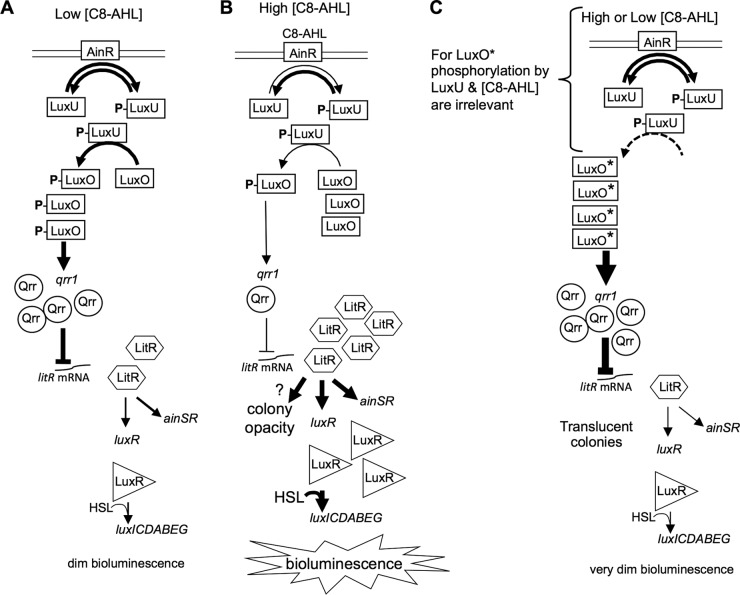FIG 1.
Model showing roles of Ain and LuxO in the pheromone regulatory circuit. The pheromone receptor AinR phosphorylates and dephosphorylates LuxU, which phosphorylates LuxO, stimulating it to activate transcription of qrr. The regulatory small RNA (sRNA) Qrr represses expression of the master regulator LitR. (A) At low C8-AHL levels, LuxO-P ultimately leads to relatively low LitR levels. (B) At high C8-AHL levels, binding of C8-AHL to AinR reduces its kinase activity, reducing the relative amounts of phosphorylated LuxU and LuxO, resulting in more LitR and induction of the LitR regulon, including luxR, bioluminescence, and ainSR. On plates, this induction also results in colony opacity through an unknown mechanism. (C) The activity of LuxO* does not require phosphorylation, although prior to this study, the effects of LuxU were untested. LuxO* essentially locks this circuit on “off,” and phenotypes resemble those at low C8-AHL levels. The colonies of luxO* mutants on plates remain translucent despite their high cell density.

